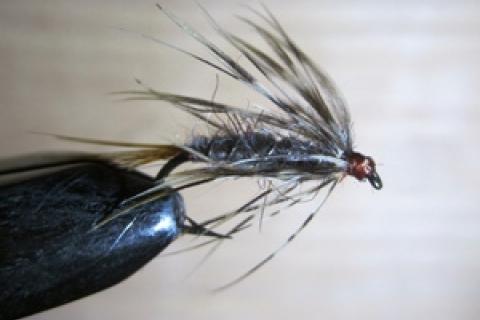
 There's an old tried and true axiom in fly fishing. Essentially it says, "Neatly tied flies catch fishermen but scruffy flies catch fish."
There's an old tried and true axiom in fly fishing. Essentially it says, "Neatly tied flies catch fishermen but scruffy flies catch fish."
In my humble opinion, truer words have never been spoken. Whether a wet fly, streamer or nymph, fish seem to have a soft spot for rough-looking flies that the average angler would pass up if examined closely in a fly bin. (I'm not so sure the same applies for dry flies, where buoyancy, color, size and a neat profile seems to matter more. Whether true or not, give me a neat dry fly every time.)
There's even some claim in angling literature that old timers used to chew on their flies before fishing them to make them scruffier. I would strongly advise against this, however. There are reasons, I think, for the fish's preference.
For one thing, a scruffy fly presents a livelier illusion as the fly drifts or is activated in the water flow. This is because the dubbing, which is picked out or mixed with longer guard hairs traps bubbles and pulsates along with the hackles or hairs — the fish see this movement and the air bubbles well on closer examination and it is, I believe, convincing.
Looser dubbing also creates the illusion of translucency so that the fly's thread coloration visually bleeds through. These characteristics help mimic the real thing remarkably well when wet, though it might not be so apparent when the fly is bone dry.
Another reason, I think, is scruffy flies, in most cases, are tied a little more sparsely — and fish, for the most part, seem to also prefer sparse wet flies and nymphs over fuller versions. And, most times, sparse streamers too.
So how do you tie scruffier flies? There are many ways but a lot of bugginess can be attained by picking out the dubbing with a needle or brushing it out with a Velcro patch glued to a Popsicle stick after the fly has been tied.
The proper dubbing material is also critical. Seal, for instance, is a good dubbing material because it really looks rough when wound on the fly. There's really nothing like it.
You will also get good results with many other natural dubbings so long as guard hairs are in the mix. Hare's Ear dubbing immediately comes to mind.
Many artificial dubbings do the trick well too. In the end, a little experimentation with dubbing, both natural and artificial, goes a long way.
All this is to say, the next time you are tying flies, don't feel bad about the ones that look a bit rough and tumble. They're probably the ones that fish like the best, even if your angling buddies don't.
- 3039 views

